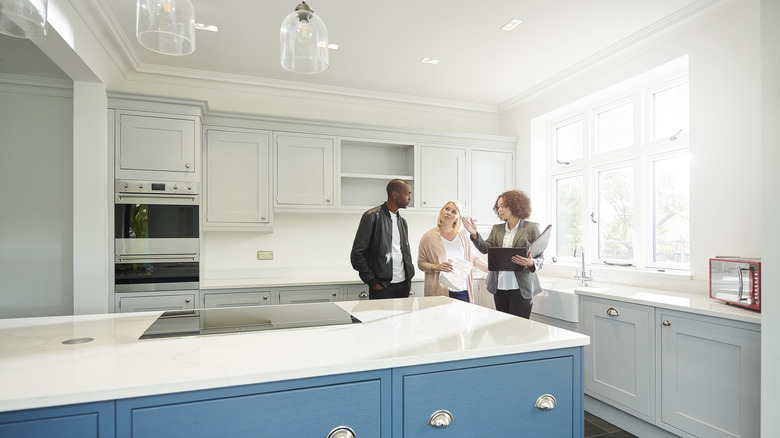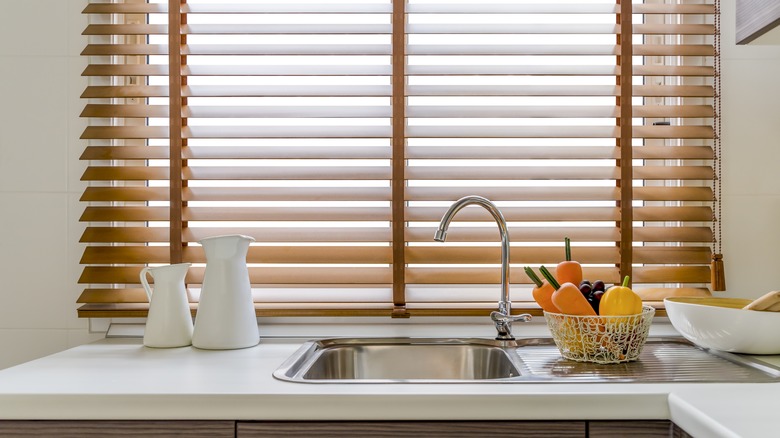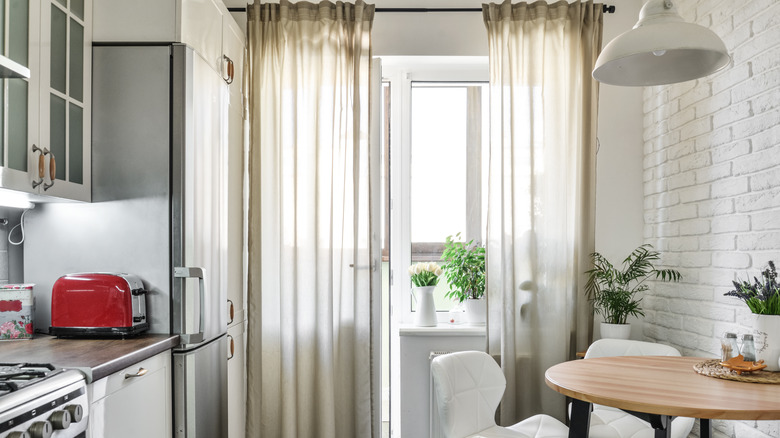Should You Get Curtains Or Blinds For Your Kitchen? Here's What You Should Consider
When it comes to the kitchen, there are so many decisions to make on a daily basis. What should you eat for dinner tonight? Is there anything you need to add to the grocery list? Do you think the milk is fresh enough to drink? Should you install curtains or blinds?
Hopefully, that last decision is one you make only a few times in your lifetime, considering the expense. According to Angi, hiring a professional to install window treatments in the kitchen costs an average of $1,019 in the United States. But the prices can vary wildly depending on whether you choose blinds or curtains, the treatments' materials and features, how many windows there are in the space, and their size. Doing the job yourself will save money, but you have to make sure that you're up to the task, which requires precision and care.
Interior design has broken free from strict norms of the past, so anything goes when it comes to deciding upon the type, style, color, and material of your window treatments. Sometimes that freedom can cause indecision — probably the most challenging aspect of choosing between curtains and blinds (or combining the two). Whatever your choice, failing to install either can make your kitchen an oven during a heatwave. You'll also probably want stylish window treatment ideas for your space, and that will depend on your taste. Here's what you should consider.
Consider window placements and messy hotspots
Blinds can add a clean, streamlined look to your kitchen, allow you to control the light coming into the space, and provide maximum privacy when you adjust the slats. There are tons of materials to choose from, including wood, faux wood, bamboo, metal, and vinyl, all offering their own choice of colors and styles. There's also a variety of shade types. Horizontal slats are usually best for kitchens because their windows are usually not very wide. Vertical slats are best for sliding doors and large windows. Roller blinds offer a modern, fresh look, while solar models are great for kitchens that get too much light. Then there's zebra, Venetian, and cordless — the list goes on. For more control, you can also get motorized blinds.
In general, blinds tend to be low maintenance because they're easy to dust and wipe down. Since you'll be cooking around the blinds, rub away splashes on a regular basis (windows above a sink or near a stovetop will get even dirtier) or you'll be faced with the chore of doing a deep clean. It's fairly easy to soak and scrub blinds in a tub filled with warm, soapy water. Ask your installer (or your supplier, if you're putting them in yourself) which material will be the easiest to maintain.
Unlimited choices allow for maximum style
Curtains can completely transform the look of the kitchen. With a wide choice of materials, colors, and styles, the room becomes a blank canvas to create a mood or aesthetic. There are linen, cotton, polyester, and woven curtains, all of which can come in a solid color or in a colorful or muted pattern. Some popular types include cafe, pinch-pleat, Roman, and blackout. Indeed, the wealth of options makes it easy to learn how to decorate with popular curtain styles. Just make sure you figure out your needs beforehand, from the amount of light you want to how much drama you're looking to create.
Since curtains can reach so many lengths, you'll want to keep practical considerations in mind. In a kitchen with windows nowhere near where you cook and wash dishes, consider drapery that goes from ceiling to floor for visual impact. Valences are good for windows around messy areas, as long as you don't require privacy. Then there are panel curtains, which are like blinds but with more coverage (though they can get messy if you're not careful). In any scenario, look for treatments that you can throw in the washing machine without damaging the material.


